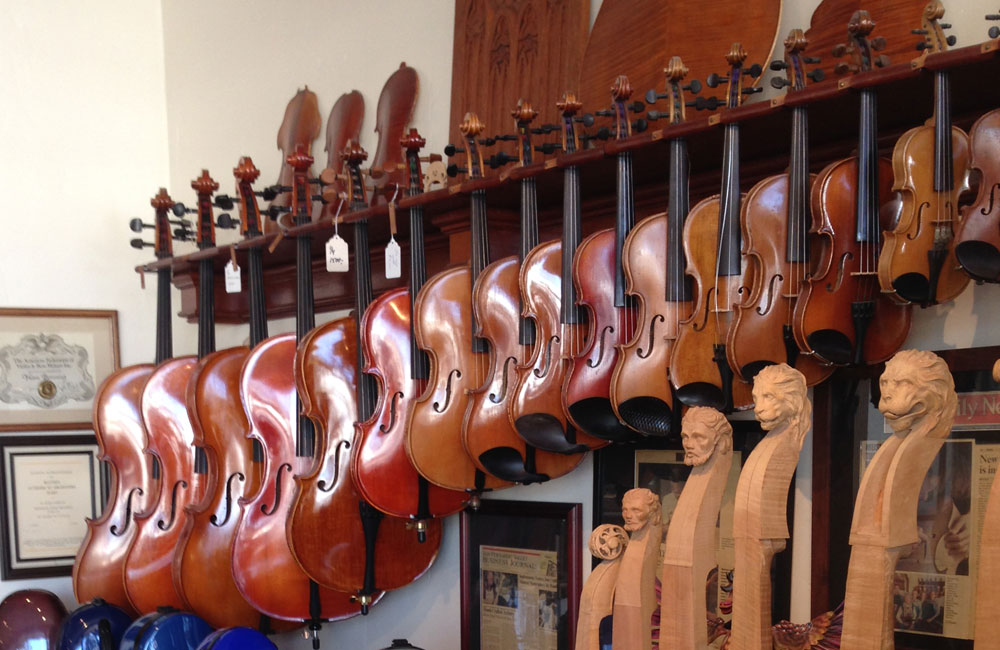Interested in how to play viola? Playing the viola is similar to playing the violin. They are both string instruments. Viola is played with a bow and held in a similar position. Here are some steps you can follow on how to play viola. But, you have to remember that online is not better for learning it properly.
Let’s Learn How to Play
- Hold the viola with your left hand and the bow with your right hand. The viola should be positioned under your chin, with the neck of the instrument resting on your shoulder.
- Place your left hand on the fingerboard of the viola. The fingerboard is the long, narrow strip of wood on the neck of the instrument. Here you place your fingers to play different notes.
- Place your fingers on the fingerboard to form a chord. A chord is a combination of notes played at the same time. To play a chord, press down on the strings with your fingers in the appropriate places on the fingerboard.
- Draw the bow across the strings with a smooth, even motion. The bow should be held at a slight angle, with the hair of the bow touching the strings lightly.
- Experiment with different bowing techniques, such as legato (smooth and connected) or staccato (short and detached), to create different sounds and rhythms.
- Practice regularly to improve your technique and develop your musical skills. As you become more comfortable with the instrument, you can start learning more complex pieces and techniques.
It’s best to take lessons from a teacher. It is the viola’s most effective way to learn. Another good idea is to find instructional resources online or in books to help you learn. With practice and dedication, you’ll be playing the viola in no time!
When to Start Viola Lessons
It is generally recommended that children start learning the viola between the ages of 6 and 9. Although children can start learning at a younger or older age. It depends on their abilities and interests. Some factors to consider when deciding when to start viola lessons. For a child, it includes their physical development, attention span, and musical ability. Children who are likely ready to begin learning the instrument-
- physically able to hold and play the viola
- have the coordination to hold the bow and press down on the strings
- can concentrate for the duration of a lesson
It is also helpful if the child has some basic musical skills. Such as being able to match the pitch or follow a beat. These will help them make progress on the viola more quickly.
Adults can also start learning the viola at any time. Although it may be more challenging for those who have not had any previous musical training. Adults need to be patient with themselves. As they learn the viola and set realistic goals for their progress. It is also helpful for adults to find an experienced teacher working with adult students. Only teachers can help them overcome any challenges they may face as they learn the instrument.
Is It Easy to Play the Viola?
Learning to play viola is fun and exciting. Like any instrument, the viola can be more or less difficult to play depending on a variety of factors. It includes the individual’s natural musical ability, physical aptitude, and previous musical experience. Some people may find that they can quickly pick up the basics of playing viola. While others may need more time and practice to feel comfortable with the instrument.
One of the challenges of playing the viola is that it is larger and heavier than a violin. It can make it more difficult for some players to hold and play for extended periods. The viola also has a lower range than the violin. This means that it requires more skill and control to produce a clear, in-tune sound. In addition, the viola has a less prominent role in many musical ensembles compared to the violin.
Overall, playing the viola can be challenging. But it can also be very rewarding for those who are dedicated to learning and improving their skills. With the guidance of a skilled teacher, anyone can become proficient at playing the viola.
How to Maintain Viola as A Beginner
As a beginner viola player, there are a few basic maintenance tasks. You do this to keep your instrument in good condition. Here are some tips to take care of your viola-
- Keep your viola in its case when you are not using it. This will protect it from damage and help prevent it from getting scratched or dented.
- Wipe down your viola with a soft, dry cloth after each use. Remove rosin dust, and any dirt or sweat that may have accumulated on the instrument.
- Use a humidifier or a humidification system to keep the humidity level in your viola’s case at a consistent level. This will help prevent the wood from drying out and cracking.
- Keep your viola’s bow in good condition by keeping the bow hair loose. Replace the bow hair when it becomes frayed or worn.
- Have your viola professionally serviced at least once a year to ensure that it is in good working order. This includes cleaning and adjusting the bridge, sound post, and strings, as well as checking for any cracks or other damage.
Following these basic maintenance steps can help ensure that your viola stays in good condition. A good-condition viola is ready to play whenever you are.
FB Page: Classical Beast



